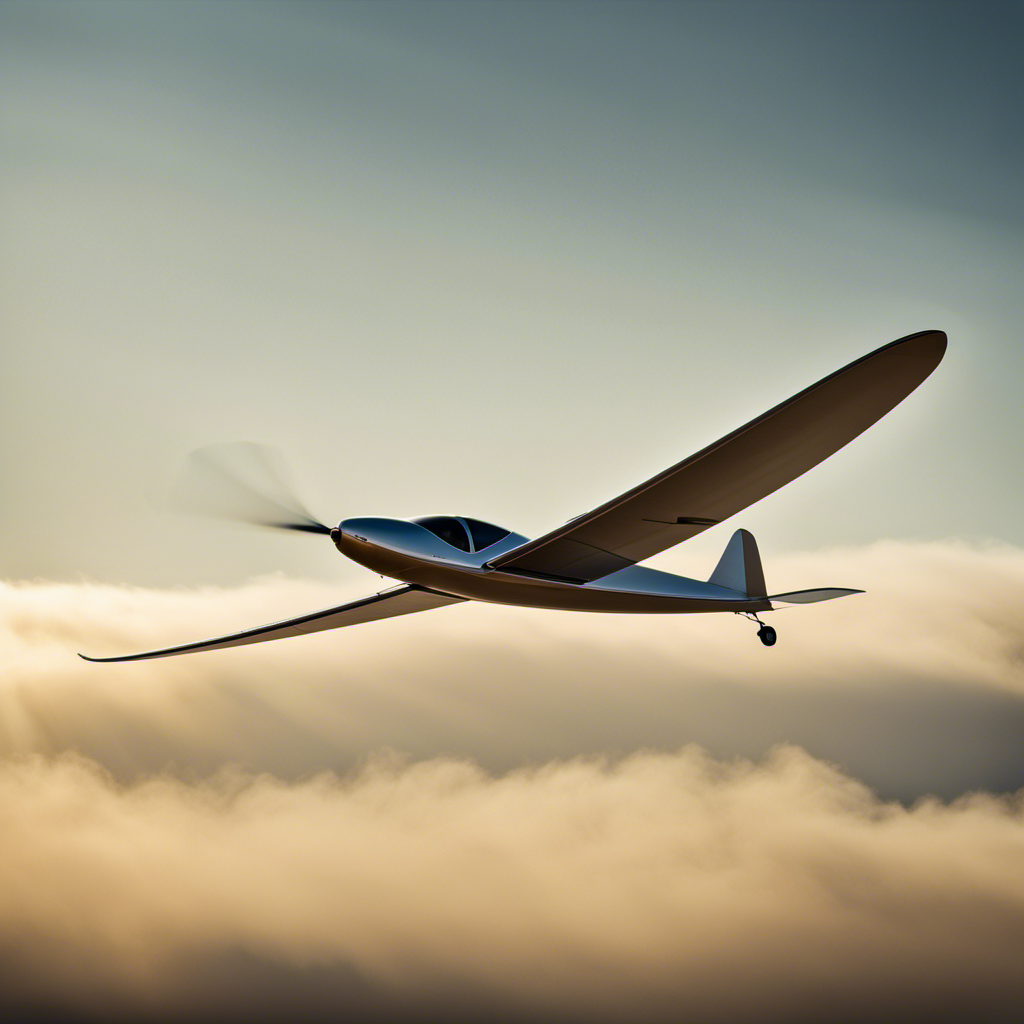Are you looking to maximize your fuel efficiency while driving? Have you ever wondered about the benefits of glide driving and how it can help you?
In this article, we will delve into the basics of glide driving, explore its techniques, and uncover its environmental impact.
Discover the science behind this fuel-saving method and learn when and where to practice it. By the end, you’ll have a better understanding of whether glide driving is the right choice for you.
Let’s get started!
Key Takeaways
- Glide driving is a fuel efficiency method that maximizes the use of momentum.
- It reduces fuel consumption, emissions, and maintenance costs while promoting a cleaner and greener environment.
- However, there are limitations to glide driving, such as reduced control over the vehicle and the inability to accelerate or brake immediately.
- Factors like driving habits, personal preferences, vehicle capabilities, and safety considerations should be taken into account when deciding if glide driving is right for you.
The Basics of Glide Driving
Glide driving is a technique where you coast your vehicle to maximize fuel efficiency. It involves taking your foot off the accelerator pedal and allowing the momentum of the vehicle to carry you forward. By doing this, you reduce the amount of fuel consumed and decrease the wear on your brakes.
When you glide, you are essentially using the vehicle’s own energy to maintain its speed, rather than relying on the engine. This technique is especially effective when driving downhill or on flat stretches of road.
Glide driving allows you to save money on fuel costs and reduce your carbon footprint. Now that you understand the basics of glide driving, let’s explore how to implement these techniques in your own driving habits.
How to Implement Glide Driving Techniques
To effectively implement glide driving techniques, it’s important to focus on maintaining a consistent speed and utilizing efficient braking techniques. By doing so, you can maximize fuel efficiency and reduce wear and tear on your vehicle’s brakes.
One key aspect of glide driving is maintaining a steady speed. Avoid sudden accelerations or decelerations, as they can increase fuel consumption. Instead, strive for a smooth and gradual change in speed.
Another technique is to anticipate traffic flow and utilize efficient braking. By anticipating the need to slow down, you can avoid unnecessary braking and instead let your vehicle naturally slow down, known as coasting. This helps conserve momentum and saves fuel.
Benefits of Glide Driving for Fuel Efficiency
When you implement efficient techniques like maintaining a steady speed and utilizing effective braking, you can experience increased fuel efficiency while driving. By practicing glide driving, you can further enhance your fuel efficiency and enjoy several benefits.
Here are a few advantages of glide driving:
-
Reduced fuel consumption: By coasting with the engine disengaged, you minimize fuel usage and maximize the distance traveled per gallon.
-
Extended vehicle lifespan: Glide driving reduces wear and tear on your vehicle’s engine and brakes, potentially increasing its longevity.
-
Environmental friendliness: By reducing fuel consumption, glide driving helps to lower carbon emissions and minimize your ecological footprint.
Understanding the science behind glide driving allows you to optimize your driving technique and reap its benefits.
Understanding the Science Behind Glide Driving
By understanding the science behind this technique, you can effectively optimize your fuel efficiency while on the road. Glide driving, also known as coasting, is a technique where you release the accelerator pedal and allow your vehicle to move forward without applying any gas. This technique takes advantage of the vehicle’s momentum to conserve fuel.
When you release the accelerator, the engine’s fuel consumption drops to zero, reducing the amount of fuel burned. As a result, your fuel efficiency increases, and you can save money at the pump. The science behind glide driving revolves around the concept of rolling resistance and aerodynamic drag.
When you coast, your vehicle experiences less rolling resistance and drag, allowing it to move more freely. This reduces the load on the engine and decreases fuel consumption.
Now that you understand the science behind glide driving, let’s explore when and where to practice this technique.
When and Where to Practice Glide Driving
You can maximize your fuel efficiency and save money at the pump by practicing glide driving in appropriate situations and locations. Glide driving, also known as coasting or hypermiling, involves using the momentum of your vehicle to move forward without pressing the accelerator pedal. This technique is most effective when you are traveling downhill, approaching a red light, or driving at a constant speed on a flat road. By avoiding unnecessary acceleration and deceleration, you can significantly reduce fuel consumption. But when and where should you practice glide driving? Here’s a handy table to help you determine the best scenarios:
| Situation | Location |
|---|---|
| Approaching a red light | Urban areas with frequent traffic |
| Driving downhill | Mountainous regions or hilly terrains |
| Traveling at a constant speed | Highways or long stretches of road |
| Coasting in a safe and controlled manner | Empty parking lots or quiet residential areas |
By incorporating glide driving into your driving habits, you can not only save money but also contribute to a greener environment. Now, let’s debunk some common myths and misconceptions about glide driving.
[Transition: Now, let’s debunk some common myths and misconceptions about glide driving.]Common Myths and Misconceptions About Glide Driving
Now that you know when and where to practice glide driving, it’s important to address some common myths and misconceptions surrounding this technique.
Glide driving is often misunderstood, leading to apprehension and hesitation among drivers. One common myth is that glide driving is only for experienced drivers or professional racers. In reality, glide driving can benefit anyone, regardless of their skill level.
Another misconception is that glide driving is dangerous and increases the risk of accidents. However, when done correctly and under proper supervision, glide driving can actually improve safety by teaching drivers how to control their vehicles in different situations.
Tips for Maintaining Safety While Glide Driving
To ensure your safety while engaging in this technique, it’s important to follow these essential tips.
Firstly, always make sure to maintain a safe distance from other vehicles on the road. This gives you enough time to react and avoid any potential accidents.
Secondly, be mindful of your speed. While glide driving allows for increased fuel efficiency, it’s crucial to drive at a speed that is safe and appropriate for the road conditions.
Additionally, regularly check your vehicle’s brakes and tires to ensure they are in good working condition.
Lastly, stay alert and focused while glide driving. Avoid distractions and always be aware of your surroundings.
By adhering to these tips, you can enjoy the benefits of glide driving while keeping yourself and others safe on the road.
When it comes to the environmental impact of glide driving, there are several factors to consider.
The Environmental Impact of Glide Driving
If you want to minimize your carbon footprint, it’s important to consider the environmental impact of using the glide driving technique. Glide driving, also known as coasting, is a fuel-efficient technique where you release the accelerator and allow the vehicle to move forward using its own momentum. This technique not only saves fuel but also reduces emissions, making it an environmentally friendly way to drive. By reducing the amount of time your engine is running and relying more on the vehicle’s kinetic energy, you can significantly decrease your carbon emissions. To better understand the environmental impact of glide driving, let’s take a look at this 3×3 table:
| Environmental Impact | Glide Driving | Traditional Driving |
|---|---|---|
| Fuel Consumption | Low | High |
| Emissions | Reduced | Increased |
| Air Quality | Improved | Degraded |
As you can see, glide driving offers lower fuel consumption, reduced emissions, and improved air quality compared to traditional driving methods. This makes it a great option for individuals looking to lessen their impact on the environment.
Now, let’s delve into comparing glide driving to other fuel efficiency methods.
Comparing Glide Driving to Other Fuel Efficiency Methods
When comparing glide driving to other fuel efficiency methods, it is important to consider the overall impact on fuel consumption and emissions. Glide driving, also known as coasting, involves taking your foot off the accelerator and letting your vehicle slow down naturally. This technique can save fuel by reducing the need for braking and accelerating.
Here are three key reasons why glide driving is a beneficial fuel efficiency method:
- It maximizes the use of momentum, allowing the vehicle to travel further with less energy consumption.
- It reduces wear and tear on the brakes, extending their lifespan and reducing maintenance costs.
- It decreases the production of harmful emissions, promoting a cleaner and greener environment.
Is Glide Driving Right for You? Considerations and Limitations
Considering the limitations and considerations of glide driving, it is important to evaluate if this technique aligns with your driving habits and preferences.
Glide driving, also known as coasting, involves shifting your vehicle into neutral and allowing it to glide without using any throttle or brakes.
While this technique can increase fuel efficiency, it may not be suitable for everyone.
One limitation of glide driving is that it reduces your control over the vehicle, as you won’t be able to accelerate or brake immediately.
Additionally, some vehicles may not allow you to shift into neutral while in motion, making glide driving impossible.
It is also worth noting that glide driving is not recommended in traffic or on steep hills, as it can be unsafe.
Therefore, before adopting glide driving as a regular practice, consider your driving environment and personal preferences.
Frequently Asked Questions
Can glide driving be used in any type of vehicle?
Yes, glide driving can be used in any type of vehicle. It involves using techniques like coasting and reducing resistance to maximize fuel efficiency and conserve energy, regardless of the vehicle you are driving.
Are there any legal restrictions on glide driving?
There are legal restrictions on glide driving. It is important to familiarize yourself with local laws and regulations. Certain areas may have speed limits or specific requirements for using glide driving techniques.
Can glide driving help reduce wear and tear on a vehicle?
Yes, glide driving can help reduce wear and tear on your vehicle. By coasting in neutral or with the clutch disengaged, you minimize stress on the transmission, brakes, and engine, leading to longer-lasting components.
How long does it take to learn and master glide driving techniques?
Mastering glide driving techniques can take varying amounts of time depending on your prior experience and dedication. With practice, you can become proficient in as little as a few weeks or it may take a few months to fully grasp the skills involved.
Are there any potential disadvantages or drawbacks to glide driving?
There are potential disadvantages to glide driving. It requires practice and experience to master the techniques. It can be challenging to control the glide and maneuver in certain situations, especially for beginners.
Conclusion
So, now that you’ve delved into the world of glide driving, you’re equipped with the knowledge and techniques to maximize fuel efficiency and reduce your carbon footprint.
By implementing these simple yet effective strategies, you can effortlessly glide through the roads, leaving a lighter footprint on our planet.
With each smooth glide, you’re not just saving fuel, but also contributing towards a greener and more sustainable future.
So why wait? Embrace the art of glide driving and let your journey become a seamless dance with the environment.









